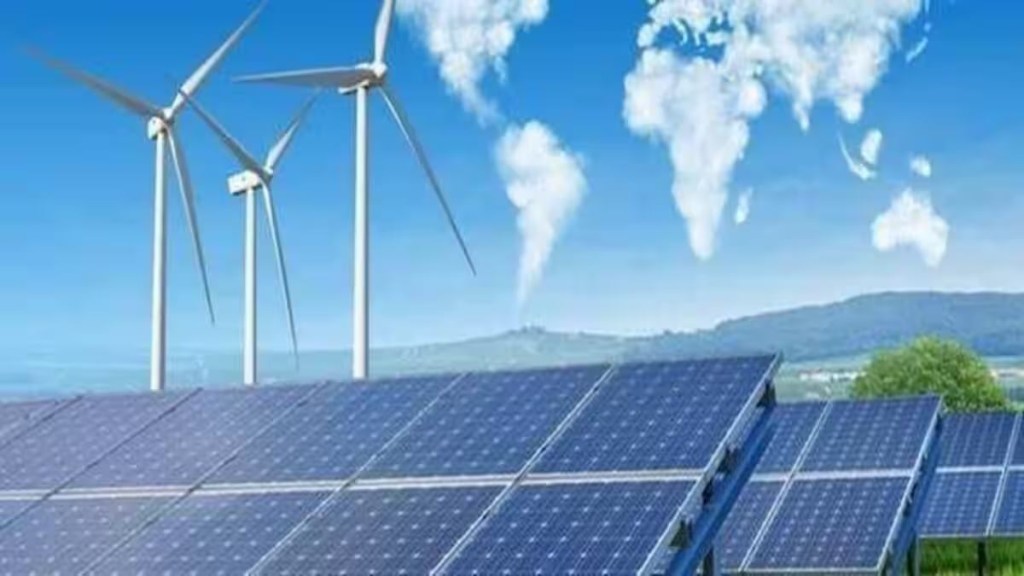By Abhishek Raj and Divya Chirayath
Recent announcements by Power Finance Corporation (PFC) and REC Ltd to increase the share of clean energy in their lending portfolios is an important step forward in India’s energy transition journey. The Power Finance Corporation plans to increase the share of green energy in its loan book from 10% to 27%, whereas REC intends to raise it from 6.8% to 25-30%. Together, both companies have announced plans to disburse around $64.8 billion (Rs 5.4 trillion) over the next seven years to finance clean energy projects.
This move by India’s largest power sector lenders is long overdue and, by itself, still not adequate to finance India’s energy transition. Estimates show that India needs to raise about $223 billion to meet its renewable energy target of providing half of its electricity through non-fossil fuel sources by 2030. The glaring gap between climate targets and the enormous capital required to finance them presents a significant opportunity for India’s power sector lenders, who have been major funders of coal, to shift their financing from fossil fuels to renewable energy. A recent analysis of PFC and REC loan books, by Climate Risk Horizons, has shown that their ability to pivot to renewables is not just going to accelerate India’s energy transition, but is also going to be the key factor in determining the companies’ own growth.
The analysis finds that PFC and REC Ltd have not diversified sufficiently into new energy technologies (wind, solar, battery storage, EV infrastructure) even as their coal power loan book shrinks.
A large proportion of India’s coal fleet has become uncompetitive and economically unviable, thanks to a steadily rising cost-competitive renewable energy industry and excess coal generation capacity. This has led to a decline in proposed new coal power projects, clearly mirrored in the lending portfolios of both companies—the share of coal lending has decreased from 71% to 47% for PFC and 45% to 40% for REC, since FY18. Given the declining rate of new coal plant construction in the coming years, a negative growth in both companies’ conventional generation loan books over the coming years looms large.
The growth rates of renewable energy (RE) in the loan assets of both companies have been much slower than the pace of India’s capacity addition and will fail to compensate for the decline in coal lending. The proportion of renewables in PFC’s gross loan assets has grown from 4% to just 10% between FY 2018–21 while its share in REC’s loan book has been stable at 3–4%. In order to deliver a 10% net profit CAGR, PFC and REC will need an estimated 142% and 156% CAGR growth in their RE loan book, which requires them to disburse about $61 billion over the next three years. This disbursement amount can finance 89 GW of solar and 38 GW of wind capacity and would go a substantial way to helping India meet its renewable energy targets. The proposed increase in the share of RE lending by both companies, however, falls far behind the amount required to profit from the energy transition underway.
Excessive reliance on financing coal projects is set to slow down profits for both lenders; without a course correction in favour of RE investments, PFC and REC’s net profit will grow at a mere 0.2% and 2.5% CAGR, respectively, from FY 2022-2025. Continued lending to coal projects will not only jeopardise the companies’ profits but will also pose material and reputational risks, as increasingly cautious ESG-aligned investors will stay away from debt market offerings from companies that are also financing fossil fuels. The proposed increase of $200 billion in the green lending capacity of multilateral development banks announced at the recently held Global Financing Summit in Paris is welcome, but remains wholly insufficient to the challenge. However, it can play a catalytic role in unlocking more finance, underscoring the need for Indian NBFCs to enhance their green credentials to attract low-cost international climate finance.
PFC and REC’s announcements promising an increased share of RE lending must also be supplemented with institutional steps to strengthen climate risk governance and management. The electricity sector’s decarbonisation presents both material risks and immense growth opportunities that cannot be seized without embedding climate risk in the overall risk management framework, including capital allocation, loan sanction, and portfolio monitoring.
The authors are with Climate Risk Horizons

